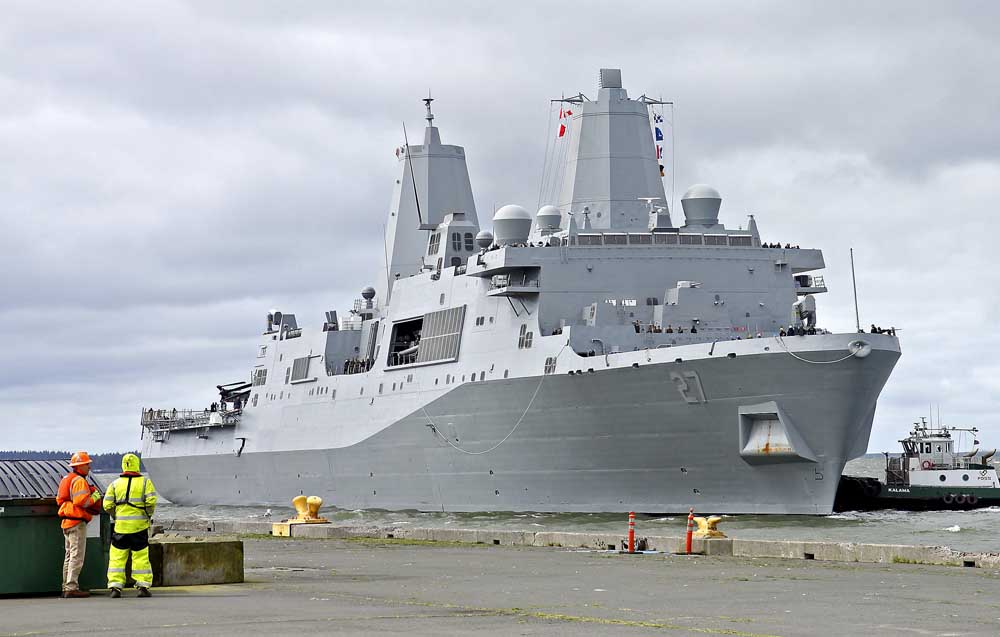New Navy ship arrives in Astoria
Published 11:43 am Thursday, April 12, 2018

- The USS Portland arrives at the Port of Astoria.
A new Navy ship that will be commissioned later this month has entered the Columbia River as it preps for the final leg of a journey to its namesake city.
The USS Portland and nearly 400 crew members docked at the Port of Astoria on Thursday afternoon, a day earlier than expected. The ship is scheduled to leave at 9 a.m. Saturday for Portland, where it will be commissioned April 21.
The Astoria Elks Lodge will host a reception for the crew and the ship’s commissioning committee Friday night. Roughly 80 invited guests will then join the crew as it continues upriver the next morning.
“It’s going to be almost an emotional thing,” said Gary Piercy, chairman of the commissioning committee. “Raising the funds to put on these activities has been a challenge.”
The ship — built at a $1.6 billion cost in a Mississippi shipyard — was officially acquired by the Navy in September, about five years after the construction contract was awarded. After leaving Mississippi in December and traveling through the Panama Canal, it arrived at its home port in San Diego more than a month later. It left San Diego earlier this week to be commissioned.
The San Antonio-class amphibious transport displaces 25,000 tons, is 684 feet long and can travel up to 22 nautical mph. It is the third ship with the name “ Portland,” but the first to be named exclusively for Oregon’s largest city.
“Portland has been a significant old port for years and years. To never have a ship named after that kind of city is pretty unusual,” Piercy said. “This is a great ship for Portland.”
The ship features an array of weapons systems. It can hold two MV-22 Osprey tilt-rotor aircraft, hovercraft, vehicles and equipment for amphibious operations.
San Antonio-class ships are designed to carry 500 to 800 Marines and could be used for amphibious assaults, special operations, anti-piracy operations and other warfare missions. But a 2010 U.S. Department of Defense report pointed to a number of deficiencies that make the ships unsuitable for active combat situations.
The ship will likely be deployed to disasters and humanitarian crises in its estimated 40-year lifespan. For example, it would be ideally suited to respond to a Cascadia Subduction Zone earthquake and tsunami, Piercy said.
“We talk about the ‘big one’ here in the Northwest, and this is exactly the type of ship that would be the first to respond,” he said.





